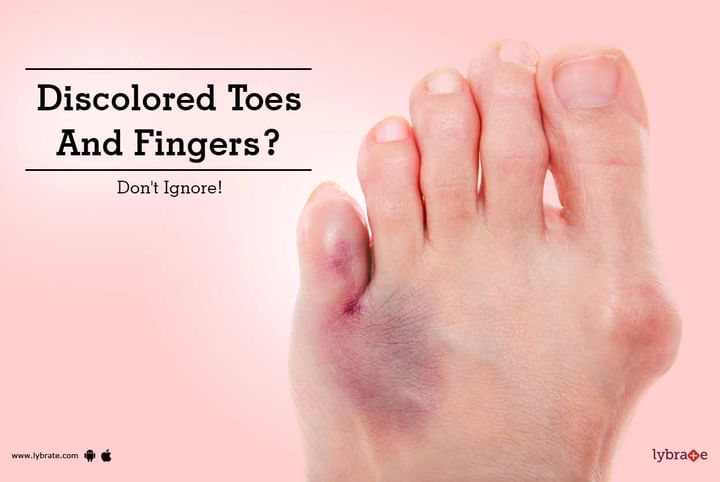Discolored Toes And Fingers? Don't Ignore!
The skin derives its color from melanocytes, which contain a pigment called melanin. Greater the content of melanin in the skin, darker is the complexion. The superficial blood vessels on the skin also add to the skin color.
There could, however, be discoloration which is often bluish, reddish, or a combination of these. This indicates underlying circulatory problems and is a cause for concern. If there was no direct impact or injury which has led to the discoloration, further investigation is required to rule out any serious underlying issue. Read on to know some of the common causes of discoloration and how to manage them.
Causes: While there could be transient reasons like touching something colorful, which left behind a color, the following circulatory problems can lead to bluish-reddish discoloration.
- Peripheral artery disease: PAD is where there is a narrowing of the blood vessels due to the accumulation of fatty deposits, in the form of plaque. This causes poor circulation and leads to discoloration
- Raynaud’s phenomenon: This is an autoimmune disorder where the arteries go into spasm and reduce blood flow, producing bluish tinged fingers and toes
- Blood clots: While blood clots are common due to direct injury in a particular area, sometimes blood clots can travel through circulation and get deposited in another area.
- Cyanosis: Cyanosis where there is reduced oxygen level and more of carbon dioxide level also leads to bluish discoloration, especially of the toes, fingers, and mucous membranes. This could be transient in extremely cold weather or high altitude, or could be due to circulatory system problems where the lung function is impaired.
- Anemia where the blood’s oxygen carrying capacity is reduced
- Heart valve diseases, usually congenital, leading to cyanosis in newborns
Symptoms: Because the body’s oxygen carrying capacity is reduced, there could be symptoms like:
- Difficulty breathing.
- Rapid rate of breathing.
- Chest pain.
- Shortness of breath.
- Extreme fatigue.
- Inability to perform daily routine tasks.
- Tingling and numbness of the fingers and toes.
- Confusion (due to reduced oxygen to the brain).
The cure for the same would depend on the underlying condition. For conditions like peripheral arterial disease and Raynaud’s, treatment is general, and not specific to discolored toes and fingers. Improvement in overall health will ensure discoloration disappears too.
Prevention involves improving the overall quality of life, including:
- Quit smoking, as it significantly improves circulation and provides more oxygen to the entire body.
- Control heart disease through a combination of diet and exercise.
- Dress warmly, especially if you are not tolerant to cold.
- Periodic medical check-ups to ensure overall health status is optimal.



+1.svg)
